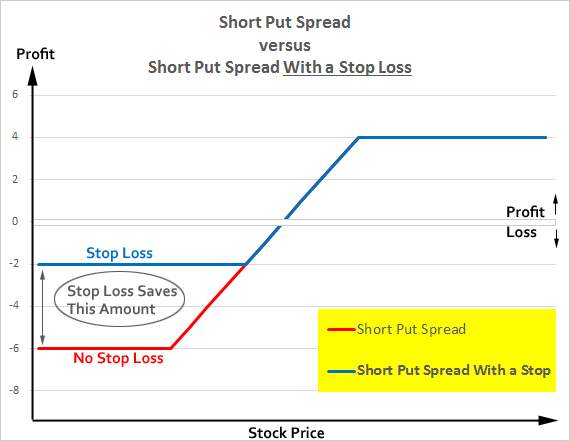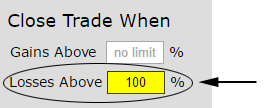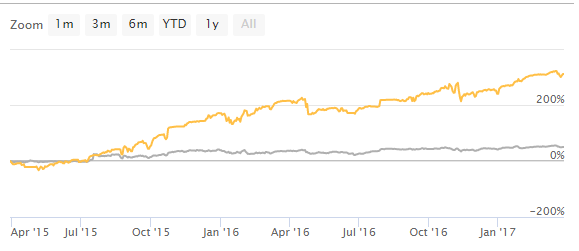LEDE
Alphabet Inc (NASDAQ:GOOGL) stock has been rising, other than the slight misstep with the YouTube ad debacle -- but as investors the real phenomenon has not been the stock rise, but rather that the stock hasn't "gone down a lot," and that has meant staggering returns from a risk protected option strategy.
PREFACE
Simply investing in an idea that Alphabet Inc (NASDAQ:GOOGL) stock won't face a serious stock decline has so outperformed owning the stock out-right that it's almost inconceivable -- but these are the facts, and they are not disputed.
STORY
Selling out of the money put spreads is an option investment that has a very clear belief system: The underlying stock simply will not go down a large amount. If that reality exists, the returns can be substantially larger than simply owning the stock.
But, with some care, we can turn that strategy into one with even less risk, and still get the out-sized returns -- and that is what we see with Amazon.
DISCOVERY
Let's look at selling a put spread in Alphabet Inc every month for the last 2-years, but also putting a further layer of protection by putting in a stop loss. Here is the difference in the profit loss graph, where the red line is a normal short put spread and the blue line is a short put spread with a stop loss added.

We can see a normal short put spread does have a risk control in place -- there is a maximum loss. But, adding in a stop loss makes the maximum loss even tighter. Applying this to Alphabet Inc (NASDAQ:GOOGL) has been a staggering winner. For those that are tech heavy investors, the exact same phenomenon has been true for Amazon.com Inc (NASDAQ:AMZN).
OPTIONS
Here is how the unadjusted risk short put spread has done in Alphabet Inc.

But, we can limit the risk even further with a stop loss -- like this:

Finally, here are the side-by-side results compared.

That's a 311% return, taking less risk than a normal short put spreads, but most importantly, that compares to the stock return of 50%. Here is a chart illustrating the double risk protected option strategy (in yellow) versus the stock return (in gray).

IT WORKS CONSISTENTLY
What we need to do now is look at this short put spread over various time periods. We see that it has worked over the last two-years, now let's look at the last year, comparing it side-by-side with the strategy that does not use a stop loss:

We see a 70.5% return versus a 18.5% return, with less risk. And, to add context, here is how this option strategy has done relative to the stock. And the stock... it's up just 9.8% in the last year. Finally we can look at the side-by-side comparison over the last six-months.

It's not a magic bullet -- it's just access to objective data. For the record, this implementation in Amazon.com Inc (NASDAQ:AMZN) returned 106% in 6-months while the stock has been up just 11%.
What Just Happened
This is how people profit from the option market - it's preparation, not luck. To see how to do this for any stock or ETF and for any strategy, with just the click of a few buttons, we welcome you to watch this 4-minute demonstration video:
Tap Here to See the Tools at Work
Thanks for reading.
Risk Disclosure
You should read the Characteristics and Risks of Standardized Options.
Past performance is not an indication of future results.
Trading futures and options involves the risk of loss. Please consider carefully whether futures or options are appropriate to your financial situation. Only risk capital should be used when trading futures or options. Investors could lose more than their initial investment.
Past results are not necessarily indicative of future results. The risk of loss in trading can be substantial, carefully consider the inherent risks of such an investment in light of your financial condition.
The author has no position in Alphabet Inc (NASDAQ:GOOGL) or Amazon.com Inc
(NASDAQ:AMZN) at the time of this writing.
Please read the legal disclaimers below.
Legal The information contained on this site is provided for general informational purposes, as a convenience to the readers. The materials are not a substitute for obtaining professional advice from a qualified person, firm or corporation. Consult the appropriate professional advisor for more complete and current information. Capital Market Laboratories ("The Company") does not engage in rendering any legal or professional services by placing these general informational materials on this website.